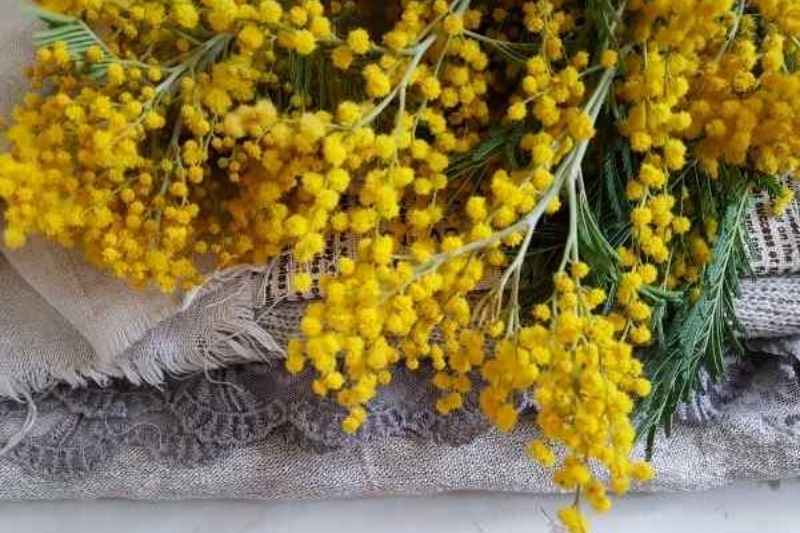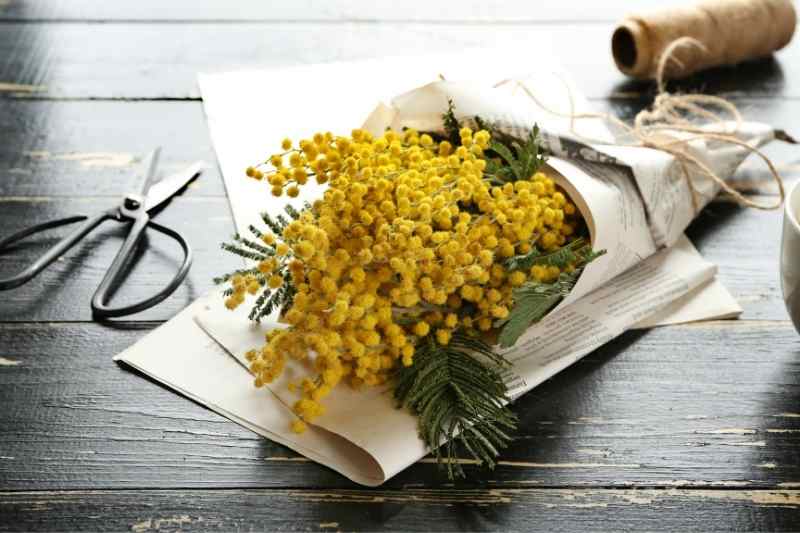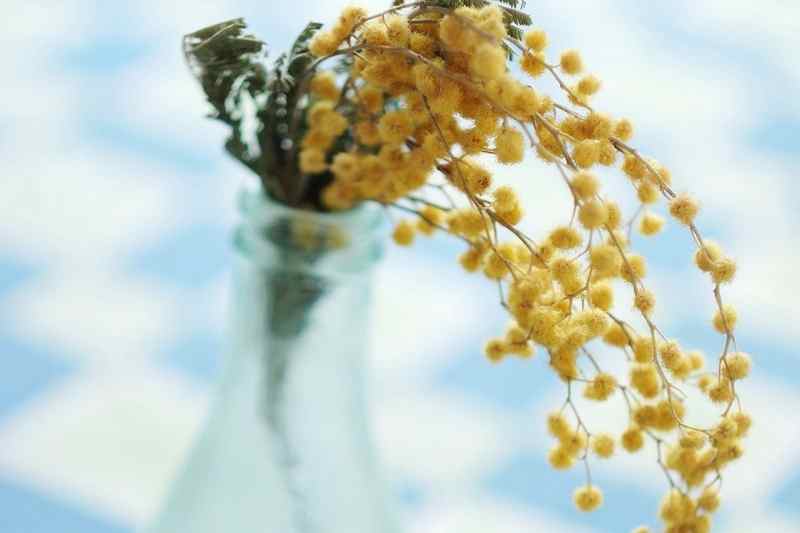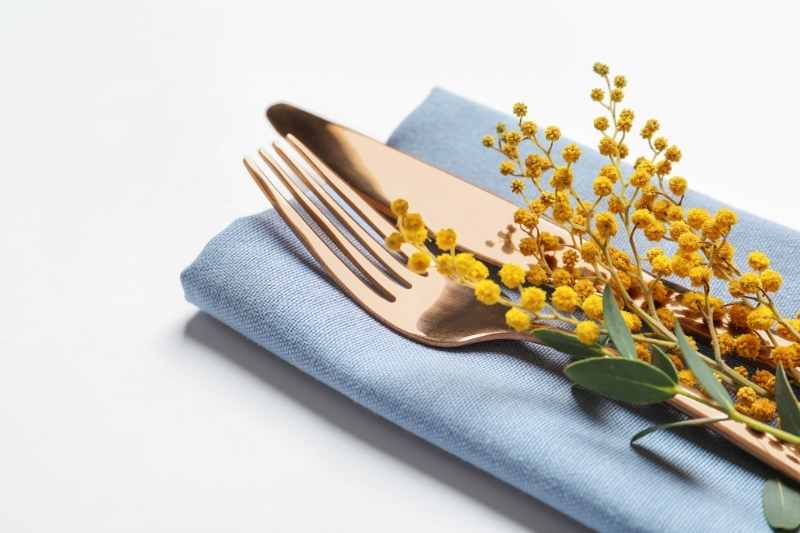The mimosa is a beautiful bush typically with winter flowering, gently heralding the arrival of spring. To enjoy its fragrance longer, its adorable pom-poms and its sunny colour all year round at home, it is entirely possible to dry mimosa flowers to create a dried bouquet, just like with hydrangeas, lavender, roses or even ornamental grasses. Discover three easy methods requiring minimal equipment to obtain and preserve beautiful dried mimosa flowers for longer.
→ Discover our complete guide on mimosa

When to pick mimosa flowers?
Picking mimosa stems for drying should be done on a dry, sunny day, preferably in the morning once the dew has evaporated.
Choose beautiful stems with flowers that are still slightly young and not fully bloomed for optimal drying.
The foliage, although attractively decorative, doesn't preserve as well and tends to crumble when dried. It should therefore be removed before drying.
It's also possible to dry a purchased mimosa bouquet, for example directly from a florist.
How to dry mimosa? Simple and economical methods
The aim of drying flowers is to eliminate all water, which would eventually spoil and rot the bouquet. The flowers can thus be preserved for several years.
You can choose to dry the flowers in a bouquet, for more relief and volume, or flat, for a different decorative use.
Air-drying mimosa by hanging
- Gather 4 to 8 mimosa stems into a small bouquet by tying them with an elastic band, string or raffia without tying too tightly, to allow good air circulation.
- Hang the bouquet upside down, using a small nail or hook.
- Choose a well-ventilated, dry, rather dark room and definitely out of sunlight, which could alter the natural colours of the mimosa flowers.
If this isn't possible, wrap the bouquet gently in a sheet of newspaper.
Depending on the ambient temperature, the humidity level of the bouquet and storage location, drying will take between several days and a few weeks.

How to dry mimosa in a vase?
Mimosa flowers can be dried directly in a vase. When the fresh bouquet starts showing signs of weakness and before it wilts, remove the water from the vase, take off the leaves and leave to dry as is, out of light.
It's also possible to dry the mimosa bouquet with vegetable glycerine, which will replace the sap and help maintain the natural flexibility of the branches and foliage. Glycerine is increasingly easy to find online, in pharmacies, cosmetic shops, craft stores, etc.
For this, simply mix 2/3 boiling water and 1/3 glycerine in a container. Pour the mixture once cooled into the vase and immerse the stems, which will gradually absorb the mixture completely before drying.

Pressing flowers to dry them
- Place the stems flat on an absorbent surface (piece of fabric, paper, cardboard...) making sure they don't overlap.
- Slide everything into a flower press or simply inside a book, covered with a weight if it's not heavy enough.
- Check the stems once a week and replace the absorbent surface if it becomes damp.
After 2 to 3 weeks, the stems should be completely dry.
How to preserve dried mimosa flowers?
To prevent dried mimosa flowers from gathering dust or moisture and their sunny colour from fading, lightly spray some hairspray or clear varnish onto the stems.
How to use dried mimosa flowers?
Dried mimosa bouquets make lovely and versatile decorations:
- placed in a vase or any other coloured or transparent container (bottle, vial, glass...)
- arranged in a basket
- simply hung up
- paired with other dried flowers
- used in floral wreaths
- on gift wrapping or a table napkin
Stems dried by pressing make pretty bookmarks, can be placed in frames for a vintage botanical illustration effect, used in collages, herbariums, etc.

Different mimosa varieties for dried flowers
-
- The mimosa (Acacia dealbata) offers a firework display of fragrant yellow flowers from January to March;
- The four seasons mimosa (Acacia retinodes) has the advantage of flowering several times and for much of the year, particularly from May to November;
- The florist's mimosa (Acacia dealbata ‘Gaulois Astier’) adorns itself in spring with small chick-yellow pom-poms with a generous fragrance;
- The blackwood mimosa (Acacia melanoxylon) reveals smaller flower balls in lighter tones, from creamy yellow to white.
































Comments